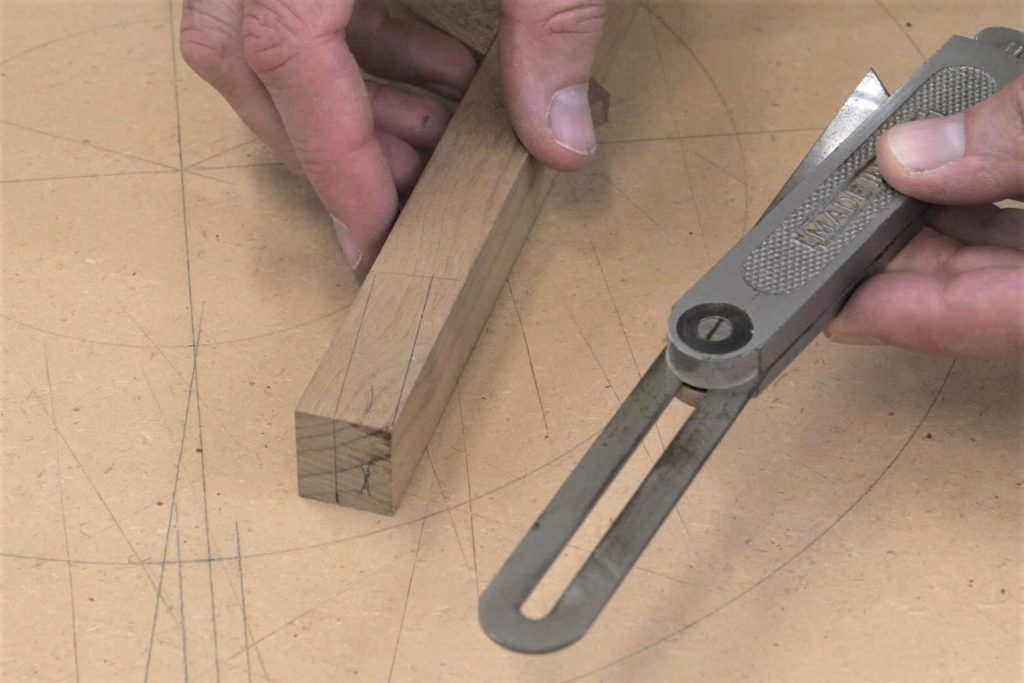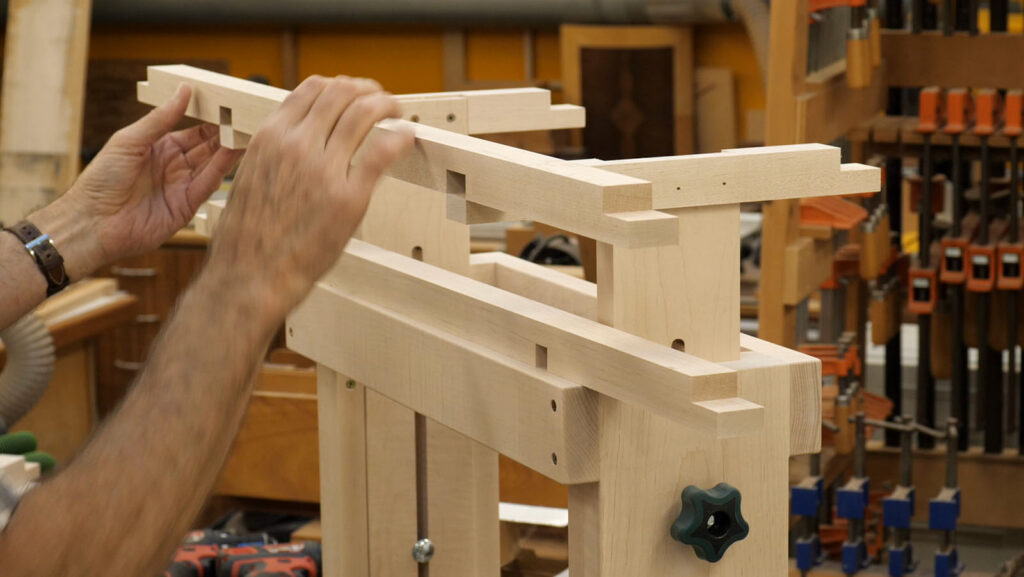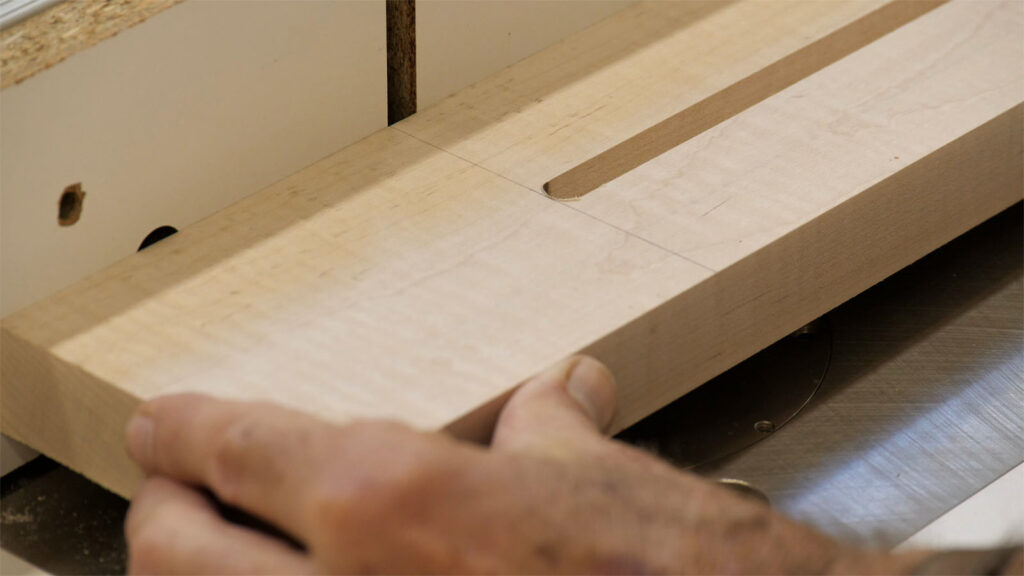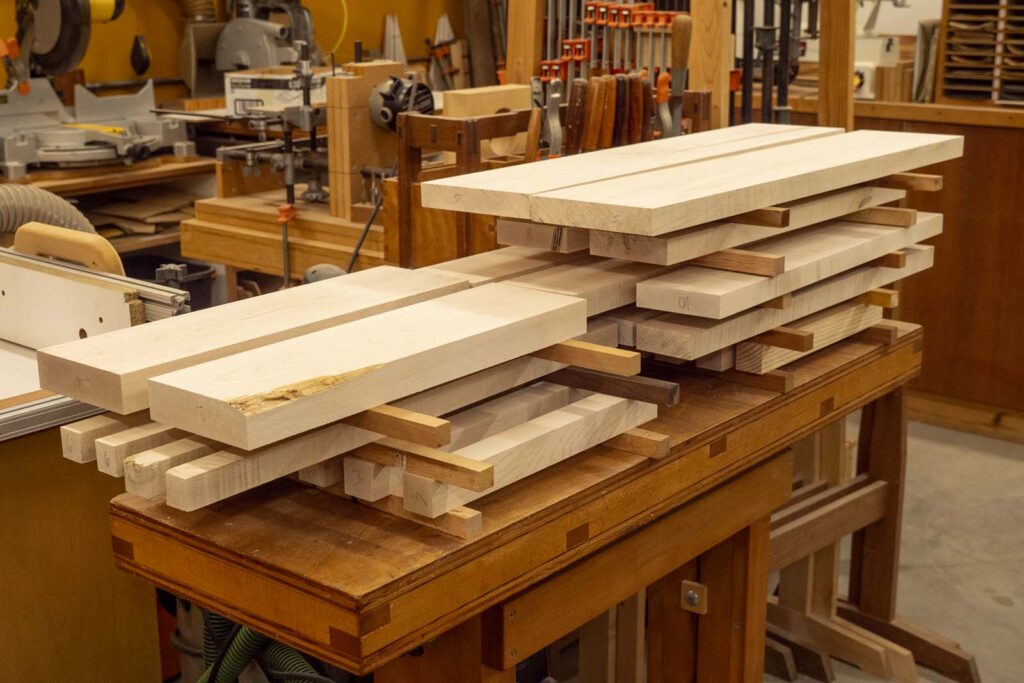Dragon Stool Part 4
On to the stretcher/leg interface. This is probably the most challenging joint, because of the tenon and shoulder angles on the stretchers. If you’ve gotten this far, however, it’s really not that difficult. And, contrary to what I state in the video it’s not a compound angle, although it may appear that way because of the shoulders.
Regardless, we’re just sawing to a line, and who cares where the line is?!? That’s one of the advantages of being able to saw well; you can pretty much cut any joint by hand.
I use the float again to trim the tenons, which I really like. My typical tool of choice for this purpose is a shoulder plane, but the long length of the float makes it much easier to control. It really works well in this situation.
As I was watching/editing the video, it occurred to me that I should mention something about marking joinery. In some cases I use a pencil and in others I use a marking knife. The knife line allows for accurate location of the chisel, typically in this case for the tenon shoulders. Note that the shoulders are always located perpendicular to the grain.

When I will be cutting with the grain (e.g. sawing the tenon cheeks) the knife line isn’t nearly as helpful. In that case a pencil line is adequate, especially when I know I’ll be trimming the surface later with a shoulder plane or float.



